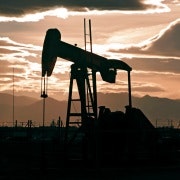Relief for a gas price crisis
There has been significant discussion in recent times about the scarcity of natural gas for Australian domestic use. While the problem of a looming gas supply crisis seems clear enough, there are a number of distinctly different views on what has caused it and what should be done to fix it.
The Australian east coast gas market is being transformed by the development of large reserves of natural gas from coal seams. Over the past 15 years, proven natural gas reserves from coal-seams have grown from almost nothing to over 41,000 PJ. In contrast, current proven reserves of conventional gas on the east coast are estimated to be a little over 7,000 PJ.
In other words, around 85 per cent of east coast gas reserves are coal seam gas. Current east coast gas demand is a little over 700 PJ per year. At first glance, it appears like we have plenty of gas!
But at the same time as significant supply has been added to the market, demand is set to triple due to the development of LNG export trains at Gladstone in Queensland. It is this surge in demand that has resulted in gas becoming scarcer with obvious upwards pricing implications.
In fact, AGL modelling indicates that unless more gas is found and developed there is a high risk of insufficient supplies for both domestic consumption and exports over the medium-term.
It is in this context that domestic industrial users of natural gas are justifiably concerned about security of gas supplies and whether pricing will be at levels which allow them to be cost-effective in a tough market with other external pressures (such as the high Australian dollar).
However, one of the things that has changed in the past few years is the outlook for new LNG proposals on the east coast of Australia. With the development of significant LNG export capacity in countries with lower costs than Australia and the emergence of new drilling technologies, which have led to the US shale gas revolution, right now it seems unlikely that new LNG export capacity (beyond that already committed to) will be forthcoming any time soon.
CLSA recently noted that ”Australia will not see any further Greenfield projects in the next decade” and Core Energy stated there will be ”no additional trains built between 2021 and 2032 because of competition from other suppliers with potentially lower production costs.” Of course, a large and sustained drop in the value of the Australian dollar could change this at some point in the future. But right now, industry analysts all seem to agree that new LNG capacity is unlikely this decade.
So if it is unlikely that new significant gas demand associated with LNG exports will materialise this decade, Economics 101 tells you that the most obvious way to put downward pressure on prices is to add more supply. And there is plenty of prospective supply.
The Commonwealth government Energy White Paper states that the in-ground resources of natural gas from coal-seams are around 258,000 PJ with a further 435,000 PJ of shale gas. Even if a small fraction of these resources are found to be economic, it is quite clear that we have plenty of gas!
However, vast new reserves of gas can only be introduced into the market if the regulatory and policy environment is conducive to the encouragement of new exploration and production activity. At a time when new supply is desperately required to put downward pressure on prices, regulation and policy is strangling the industry. Over the past few months we have seen governments of all political persuasions introducing non-scientific and ad-hoc policies.
I understand the reasons why large users of natural gas are calling for a reservation policy. However, it is almost impossible to see a reservation policy producing any positive outcome for consumers in the short-term given existing LNG contracts and the tight supply/demand balance.
The only way to reduce pricing pressures for our domestic users is to see new prospective reserves and productive capacity added to the market. It is critical that governments base their planning and environmental policies on science, not conjecture and hearsay – something that was heartening to see a range of industries state collectively earlier in the year. Over the medium-term, the most effective way to reduce emerging gas pricing pressures is to simply produce more gas.
This piece is based on a paper delivered at the APPEA 2013 conference.
Tim Nelson is Head of Economics, Policy and Sustainability at AGL Energy.
















